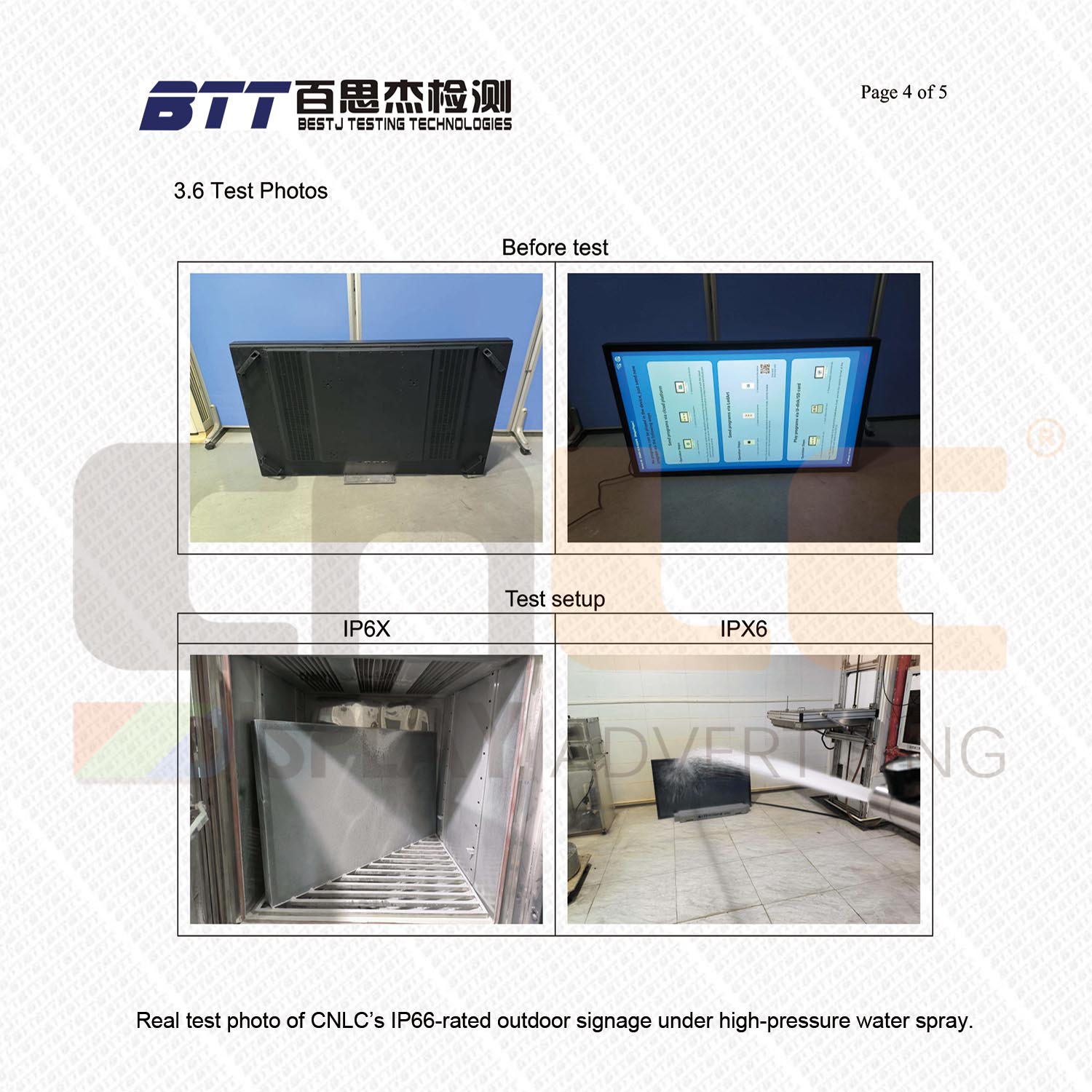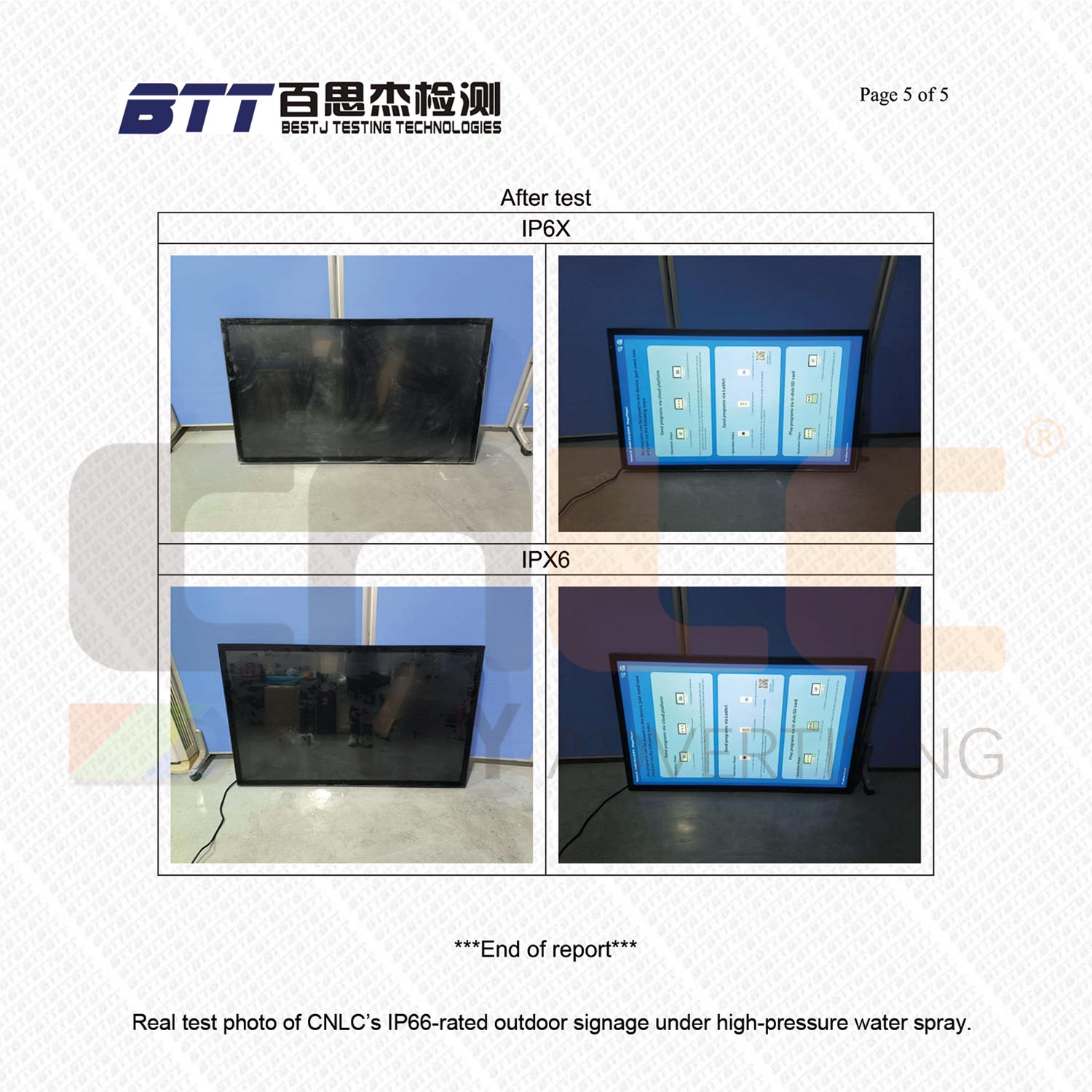When choosing outdoor LED displays or LCD advertising machines, many users notice IP56, IP65, IP66, or IP67 listed in the product specifications. But what exactly do these IP ratings mean? What’s the difference between them? Today, let’s walk you through the definition and practical significance of IP ratings, using CNLC’s outdoor display products as examples.
1. What Is an IP Rating?
IP stands for Ingress Protection, an international standard defined by the IEC (International Electrotechnical Commission, IEC 60529). It specifies the level of protection an electronic device provides against solid objects (like dust) and liquids (mainly water) — especially important for products that operate in harsh outdoor environments, such as digital billboards, signage kiosks, and traffic screens.
The IP rating is represented by "IPXY", where:
-
X (first digit) indicates the level of protection against solid particles.
-
Y (second digit) indicates the level of protection against liquids.
2. The Difference Between IP56, IP65, IP66, and IP67
| IP Rating | Dust Protection (First Digit) | Water Protection (Second Digit) | Description |
| IP56 | 5 – Dust-protected (limited ingress, no interference with operation) | 6 – Powerful water jets | Good for outdoor use; resists dust and strong water spray |
| IP65 | 6 – Completely dust-tight | 5 – Water jets | Total dust protection and resistant to water spray from any direction |
| IP66 | 6 – Completely dust-tight | 6 – Powerful water jets | Higher water resistance than IP65; withstands stronger water pressure |
| IP67 | 6 – Completely dust-tight | 7 – Temporary immersion (1 meter for 30 minutes) | Dustproof and waterproof, safe for short-term submersion |
💡 Tip: The higher the number, the stronger the protection—but also the higher the cost and technical requirements.
3. Why Does the Right IP Rating Matter?
Different environments require different levels of protection. For example:
-
Outdoor advertising screens must withstand rain, dust, and sunlight.
-
Traffic signs may need to endure high-pressure water cleaning.
-
Coastal or humid environments may expose devices to condensation or temporary water immersion.
Choosing the correct IP rating helps:
-
Extend equipment life
-
Reduce maintenance costs
-
Prevent failures and downtime
4. How Do CNLC Products Handle Environmental Challenges?
As a professional manufacturer of outdoor LCD and LED digital signage, CNLC understands that each environment has unique demands. Our product lines support multiple IP levels to meet a wide range of use cases:
✅ IP56 – Standard Outdoor Configuration
-
Use Cases: Roadside ads, outdoor MUPI, bus stop shelters, commercial district
✅ IP65 / IP66 – Enhanced Protection (Custom Option)
-
Use Cases: Coastal cities, regions with frequent heavy rain, industrial park
✅ IP67 (Custom Option)
-
Use Cases: High-humidity, coastal areas, tunnels, seaports, or locations prone to temporary water immersio
| Real test photo of CNLC’s IP66-rated outdoor signage under high-pressure water spray. | |
 |
 |